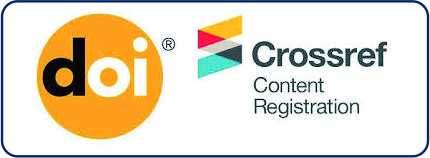الطريقة المثلى في تعليم القواعد النحوية للمبتدئين والمتقدمين لغير الناطقين بها
The Ideal Method in Learning Rules of Nahwu for Beginners and Advanced Students for Non-Arabic Speakers
DOI:
https://doi.org/10.36701/bashirah.v1i1.232Keywords:
Aural-Oral Method, Inductive Method, Rules of Nahwu, ExerciseAbstract
This study aimed to identify and describe the best method of teaching rules of nahwu for beginners and advanced students for foreign speakers (non-Arabic). This research was a qualitative descriptive study with a type of library research by tracing references in data collection. The results of this study indicate that the best method of teaching rules of nahwu for foreign speakers is of two methods, namely: The first one is the aural-oral method (sam'iyyah syafawiyyah) for the beginner level. This method uses patterned training techniques (pattern drill) through activities of istimā' (listening) and kalām (speaking) to form behavior (habits) for beginner-level learners in using language along with learning rules of nahwu through sentence structure (applied nahwu); The second one is the method of al-istiqra'iyyah (inductive method) for advanced students. This method is one that makes the dialogue/reading text the center of learning all language skills, both speaking and reading related to the rules of nahwu by using three training techniques (drill) that do not come out of the dialogue/reading text, namely the pattern drill (patterned training), meaning drill (exercise of the meaning) and communicative drill (communication exercise). These three techniques combine the formation of behavioral habits in using language along with understanding the meaning and ability to communicate with native speakers (Arabs) by paying attention to the theoretical principles of nahwu (nahwu concept) and applied nahwu (applied nahwu).
Downloads
References
- أحمد مرغني عيسوي. (1425هــ). سلسلة تعليم اللغة العربية –كتاب النحو للمتسوى الثاني-. الرياض: جامعة الإمام محمد بن سعود الإسلاميةـ
ديجة ميداني، (2018م). طرائق تدريس النحو. رسالة الماجستير، جامعة أحمد دراية، الجزائر.
داود عبده. (1405هــ). التراكيب اللغوية في كتب تعليم العربية لغير الناطقين بها. السودان: المجلة العربية للدراسات اللغوية.
السيد أحمد الهاشمي. (1971م). القواعد الأساسية للغة العربية. بيروت: دار الكتب العلمية.
عبد الرحمن بن إبراهيم وأصدقاءه، (1424هـــ). العربية بين يديك. الطبعة الثالثةا؛ الرياض: العربية للجميع.
عبد الرحمن بن إبراهيم الفوزان. (1432هــ) إضاءات لمعلمي اللغة العربية لغير الناطقين بها. ط.1: الرياض: مكتبة الملك فهد الوطنيةــ.
عبد العليم إبراهيم. (1381هــ). الموجه الفني لمدرسي اللغة العربية. ط. 10: القاهرة: دار المعارف.
علي أحمد مدكو. (1427هــ). طرق تدريس اللغة العربية. ط. 1: عمان: دار المسيرة.
محمود إسماعيل صيني وأصدقاؤه. (1406 هــ). مرشد المعلم في تدريس اللغة العربية لغير الناطقين بها. ط.2،: الرياض: مكتبة التربية العربي لدول الخليج..
محمود تيمو. (دون سنة). مشكلات اللغة العربية. دون الطبعة؛ بيروت: منشورات المكتبة العصرية.
محمود علي السمان. (1983م). التوجيه في تدريس اللغة العربية. القاهرة: دار المعارف.
محمود كامل ناقة. (1405هــ). تعليم اللغة العربية للناطقين بلغات أخري – أسسه ومداخله وطرق تدريسه-. دون الطبعة؛ المملكة العربية السعودية: جامعة أم القرى وزارة التعاليم العالي.
مختار الطاهر حسين. (1424 هــ). تعليم اللغة العربية لغير الناطقين بها في ضوء المناهج الحديثة. رسالة دكتورة.



.jpg)









